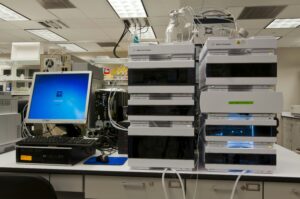
The proportion of women presenting to Australian general practices with endometriosis has nearly doubled over the past decade, according to a recent study by Monash University’s SPHERE Center of Research Excellence. The study, published in the Medical Journal of Australia, highlights an alarming trend in the diagnosis of this often-debilitating condition between 2011 and 2021.
The comprehensive cohort study, titled “The clinical presentation, investigation, and management of women diagnosed with endometriosis in Australian general practices, 2011–2021: an open cohort study,” analyzed deidentified electronic medical records from nearly 20,000 women aged 14 to 49 years. These women sought care from 660 general practitioners across 2,700 clinics nationwide.
Understanding the Increase in Diagnoses
The increase in endometriosis diagnoses is attributed to several factors, including heightened awareness driven by advocacy groups and improvements in clinical investigations like pelvic ultrasounds. These developments have made it easier for healthcare professionals to recognize and diagnose the condition.
Professor Danielle Mazza, the lead author of the study and Director of the SPHERE Center of Research Excellence, emphasized the complexity of diagnosing endometriosis. “We saw a significant increase in women attending general practice with endometriosis. They present to the GP with a broad range of symptoms, which can make it difficult for a GP to recognize the presence of endometriosis,” she stated.
“Endometriosis can be difficult to diagnose, as symptoms are often complex and can be present in a range of conditions other than endometriosis. We need to provide support to GPs so they are better able to identify and manage endometriosis. There is more to be done.” – Professor Danielle Mazza
Implications for General Practice
The findings of the study are pivotal for refining future strategies aimed at improving the diagnosis and management of endometriosis in general practice settings. The research provides essential insights into the presentation and management of the condition, forming a crucial foundation for the implementation of an Endometriosis Management Plan (EMP) scheduled for mid-2026.
In June 2025, eight general practice clinics across New South Wales, Victoria, South Australia, and Western Australia began piloting the EMP. Developed by SPHERE in partnership with the Royal Australian College of General Practitioners (RACGP), the EMP is a key component of the National Endometriosis Action Plan.
By the Numbers
- The median time taken to diagnose endometriosis in women attending general practice is 2.5 years.
- There was a significant increase in the use of pelvic ultrasounds for diagnosis from 2011 to 2021.
Professor Mazza noted, “The increase in numbers of women receiving pelvic ultrasounds is also welcome given recent guideline recommendations to utilize this investigation to assist in diagnosis.”
Looking Ahead
The study’s revelations underscore the need for continued efforts to support general practitioners in identifying and managing endometriosis. As the EMP is piloted and refined, it is expected to play a crucial role in standardizing care and reducing the time to diagnosis for women suffering from this chronic condition.
Meanwhile, advocacy groups and healthcare professionals continue to push for greater awareness and understanding of endometriosis, aiming to improve the quality of life for those affected. The ongoing collaboration between research institutions, healthcare providers, and advocacy groups is vital in addressing the challenges posed by endometriosis and ensuring that women receive timely and effective care.
As the National Endometriosis Action Plan progresses, the insights gained from this study will be instrumental in shaping policies and practices that better serve women across Australia.







